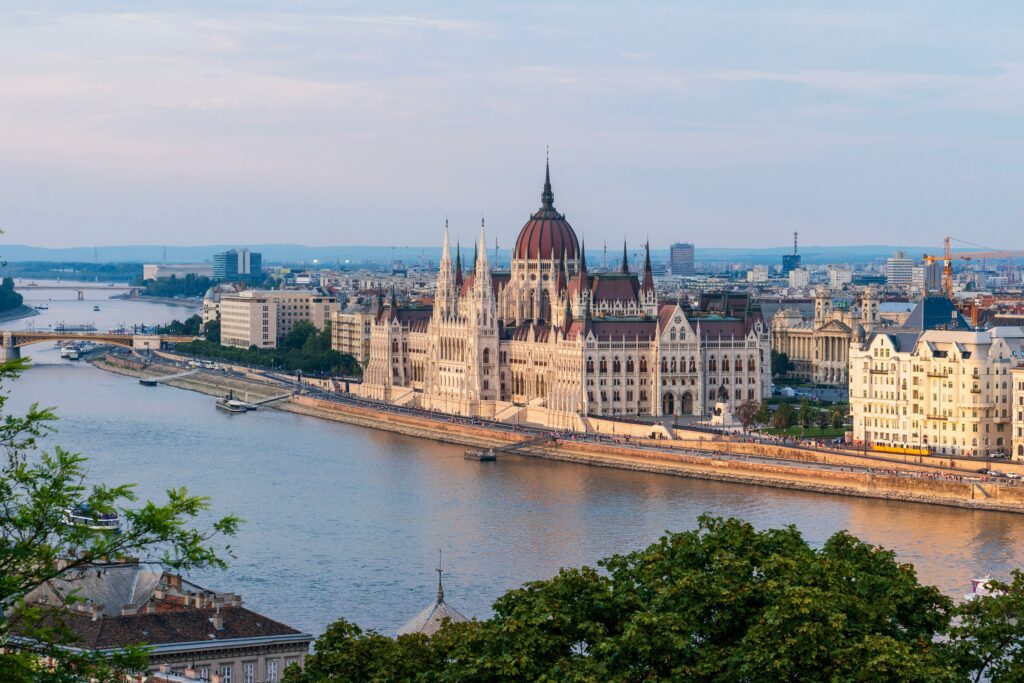A Food Fun Travel Guest Post
Despite its small size, Hungary is a popular tourist destination. Hungary is home to many fascinating places outside its capital, including historic castles and towns, thermal spas, and scenic landscapes. In addition, Hungary’s easy access by car, rail, bus, or aeroplane puts it among the most promising travel and leisure destinations in central Europe. Here are some interesting things that you should be aware of before visiting Hungary:

The best season to visit Hungary
Hungary’s location in the geographic centre of Europe is clearly apparent when looking at a map of the country. Because of its position, the nation is surrounded by mountains on practically all sides, including the Tatras, Alps, and Carpathians. As a result, the country has a warm temperature with brief, snowless winters. January, which is the coolest period of the year, stays around zero degrees. There’s hardly much snowfall. Early autumn and late spring are the most favourable seasons to travel to Hungary. These months are ideal for travel and excursions around the nation since there won’t be any intense heat waves. Furthermore, Hungary’s thermal baths are accessible year-round, allowing you to visit them whenever you like.
Language of Hungary
One of the hardest languages in the world today to learn and comprehend is Hungarian. It is comparable to learning Chinese or Mongolian in difficulty and is a member of the Finno-Ugric language family. The dialects of the Mansi and Khanty peoples, who raise reindeer in Siberia, are the ones that are most similar to it. You should expect to understand very little of what is being said in Hungary before you visit. English is less common among the workers at hotels and tourist destinations, however, some of them speak German. Before visiting Hungary, it would be helpful if you could pick up a dozen of the most often-used terms in the language. If not, get a mobile app that allows you to instantly translate written language into Hungarian.
Currency of Hungarian
The Hungarian forint is still in use today, despite Hungary’s membership in the European Union and the Schengen Area. The forint is often denoted by the price tag “Ft” in retail establishments, whereas “HUF” is the abbreviation used in exchange offices. Bringing euros is the best option if you want to exchange them for local Hungarian money when you get there. Euros are not often accepted in shops and restaurants, and even if they are, the exchange rate will not be lucrative. Banking or exchange offices are the finest places to swap money. Hotel, airport, and other tourist hotspot exchange rates will be unfavourable. Although bank cards are widely used in Hungary, it is best to always have a modest amount of cash on hand in forints since not all places take them.
An inland vacation spot

Photo by Zoltan Kovacs on Unsplash
Hungary is regarded as the greatest international resort due to its abundance of hot thermal springs, despite not having access to the sea. The Hungarians have a saying that goes something like, “Put a stick in the ground, and a warm water spring will pop up right under it.” The therapeutic baths in Hungary, some of which are modelled after actual palaces, are a must-visit destination for tourists. The biggest thermal lake in Europe, Lake Heviz, is the most well-known bathing destination in the nation. It is situated inside an extinct volcano’s crater. The lake is almost 40 metres deep, and the water’s temperature never falls below 26 degrees.
Hungary has more to offer than just its capital
Hungary has been around for a very long time. Justifiably, it is among the oldest nations in Europe, having been founded in 896. Hungarian history’s ups and downs have left their imprint on the country’s rich tapestry of tourist destinations. Everywhere you look, you’ll see a palace, fortress, castle, antique church, or mediaeval city.
Hungarian food

Image Resource: cs.wikipedia.org
Pork is the primary meat used in many of the meat dishes in Hungarian cuisine. Compared to Russia or Ukraine, Hungarians consume much more fat. Goulash is the most well-known Hungarian meal; nevertheless, it is really a soup rather than a stew. It’s interesting to note that Hungarians were also responsible for the invention of salami sausage, but the most well-known varieties are now made in Italy. Pork fat is used in many Hungarian cuisines, which are then seasoned with paprika, onion, or spicy pepper. In general, Hungarian food is not very nutritious. When you go to a restaurant in Hungary, you should try the “Dobosh” cake, the “Perkelt” or “Paprikash” meat dishes, and the “Debrecen sausages.”
The uncharted waters of the Hungarian Sea
The “Hungarian Sea” gets its name from Lake Balaton, which is the biggest body of water in central Europe. It is 80 kilometres from this lake. Since it is not deep and has an extensive length, the summertime water temperature rises well, particularly in shallow water. Although the lake’s water is a touch murky, it still boasts a stunning blue colour. In the Balaton region, there are a lot of hotels, spa centres, and thermal springs. Families with little children will love the lake’s sandy beaches and gently sloping southern coast. Nonetheless, sailing aficionados are more drawn to the northern shore. Siofok is the biggest resort on the lake. You may swim, enjoy the thermal springs, lounge on the beach, ride a yacht or boat, try kiteboarding or windsurfing, and more here.
The oldest European vineyards
The world’s first vineyards, according to records, were planted in Hungary. Known for its Tokai wines, the Tokai area is where they are situated. Here, wine was first produced in the fifth century, and the area was recognized as the world’s oldest vineyard in 1737. It is now listed as a World Heritage Site by UNESCO. The Tokajvineyards are situated on tiny slopes with a unique microclimate between 100 and 400 metres above sea level. Nearly all of the residents own a wine cellar. The most well-known wine in the area is known as Assu (Tokaji Aszu). Botrytis cinerea, a noble mould, is used in its production, giving it a distinctive flavour. The French monarch Louis XIV used to particularly like this sweet dessert white wine.
Hopefully, you’ll be able to use the information in this article to better prepare for your trip to Hungary. In order to assist you in planning your trip via Wizz Air and get more details, this page has compiled a few essential facts about Hungary. You will discover the location of Hungary, whether a visa is required, the currency used there, and what is seen.



